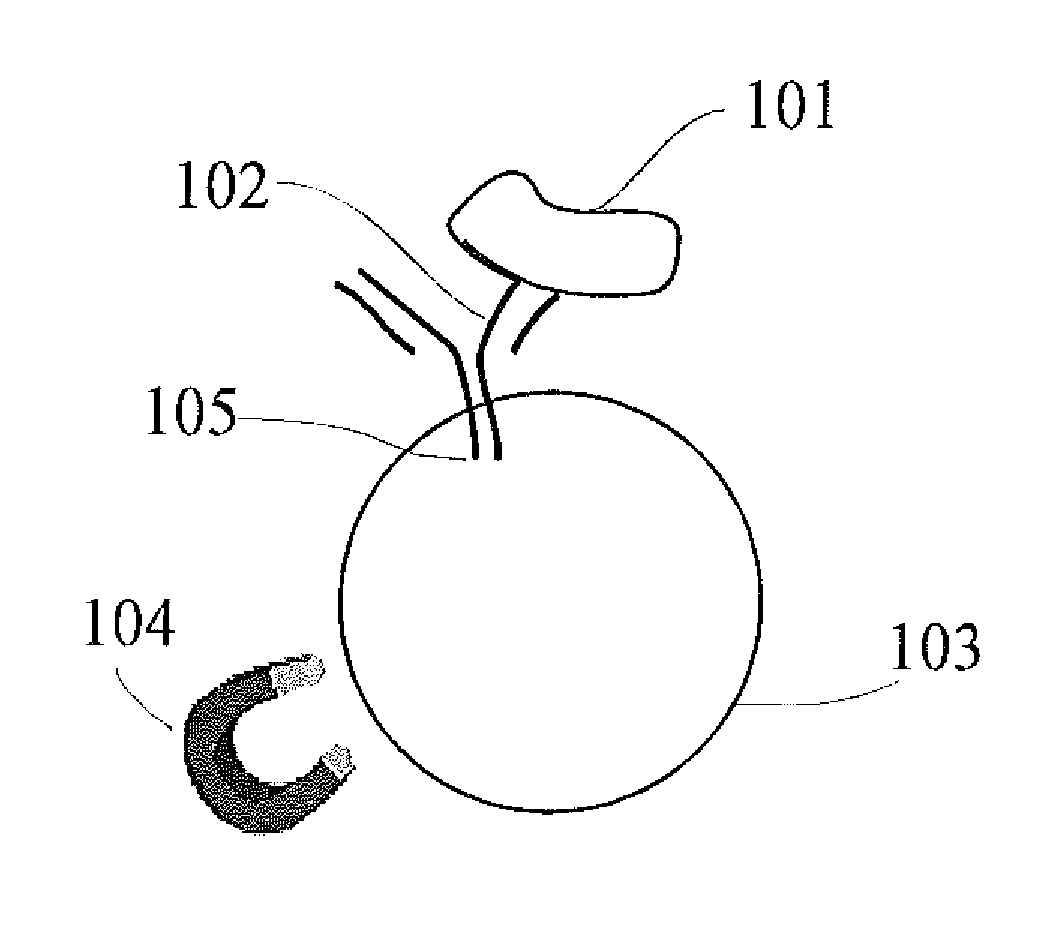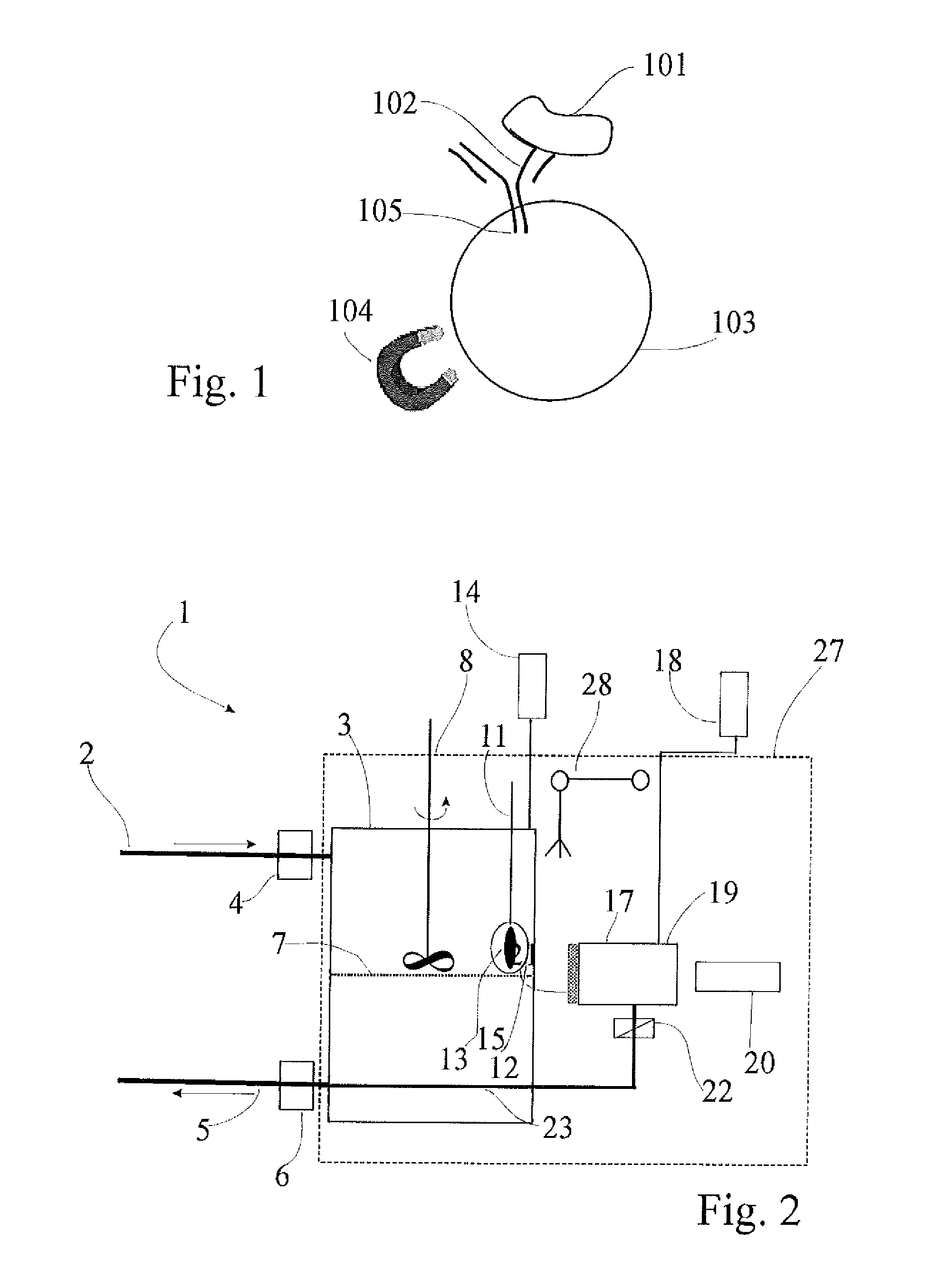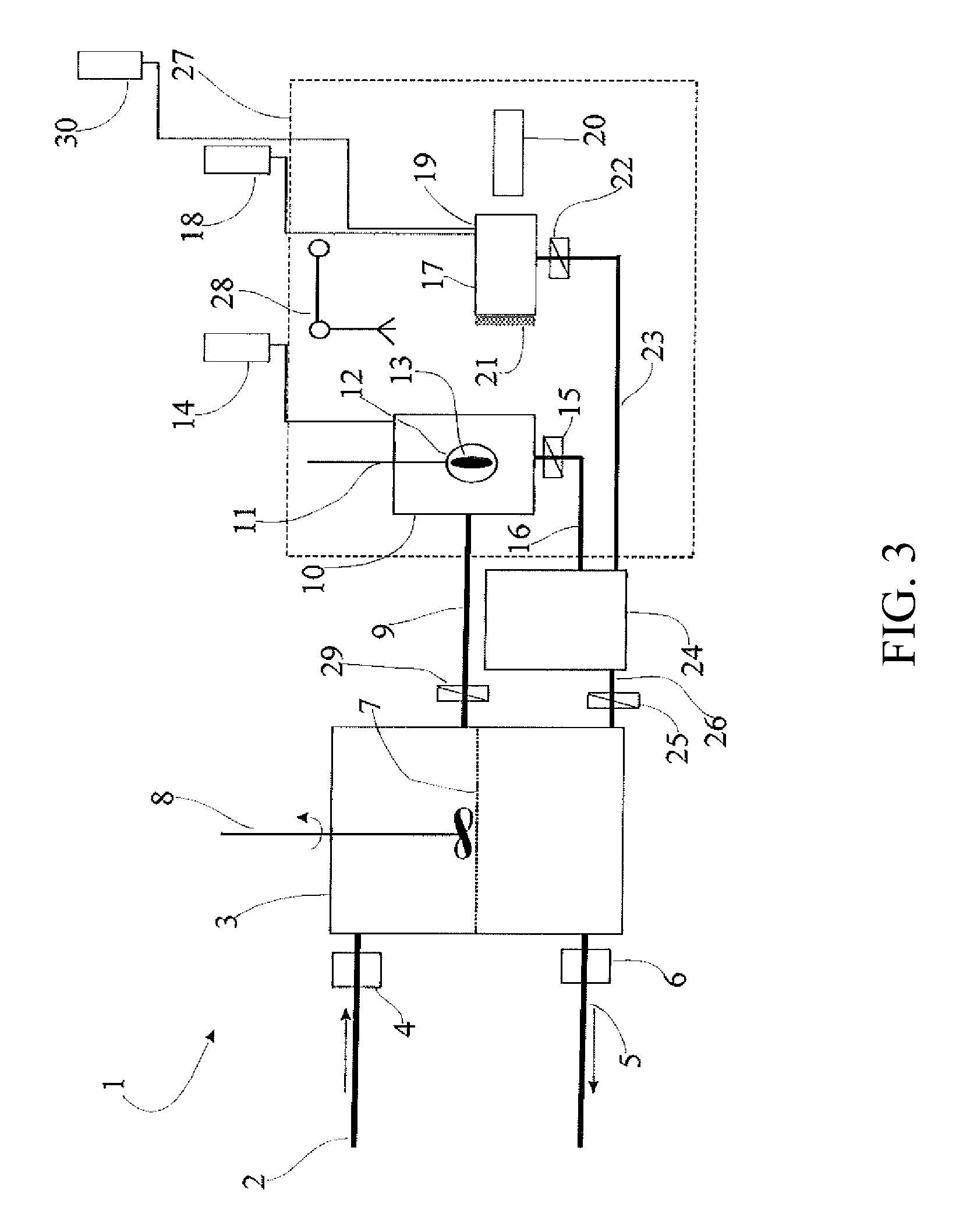Legionella test
a technology of legionella and water, applied in the field of legionella test, can solve the problems of large amount of water to be tested, inability to analyze problem-free, and not every contact with legionellae-containing water leads to a health risk, etc., and achieves the effect of rapid on-site testing and low cos
- Summary
- Abstract
- Description
- Claims
- Application Information
AI Technical Summary
Benefits of technology
Problems solved by technology
Method used
Image
Examples
Embodiment Construction
[0043]FIG. 1 shows the functional principle of an immunomagnetic bead. A microorganism 101, for example a Legionella, is bound to a particle 103 via a specific antibody 102 or antibody segment. The antibody 102 is connected to the particle 103 via appropriate binding sites 105. By means of its specific binding to epitopes particular microorganisms, a microorganism can thus be bound with high specificity to a particle 103. The particle 103 (bead) can be of differing configuration. In the case of the present invention, the particles 103 are magnetic and can thus be bound to a magnet 104. This makes possible magnetic removal of the particles 103 and thus likewise removal of the Legionellae 101 bound to the particles 103 via the antibodies 102.
[0044]FIG. 2 shows one embodiment of an apparatus 1 according to the invention. A sample volume is supplied to a filtration cell 3 via an inlet 2. The filtration cell 3 has a filtration device 7, for example a membrane filter having a pore size of...
PUM
| Property | Measurement | Unit |
|---|---|---|
| wavelength | aaaaa | aaaaa |
| wavelength | aaaaa | aaaaa |
| wavelength | aaaaa | aaaaa |
Abstract
Description
Claims
Application Information
 Login to View More
Login to View More - R&D
- Intellectual Property
- Life Sciences
- Materials
- Tech Scout
- Unparalleled Data Quality
- Higher Quality Content
- 60% Fewer Hallucinations
Browse by: Latest US Patents, China's latest patents, Technical Efficacy Thesaurus, Application Domain, Technology Topic, Popular Technical Reports.
© 2025 PatSnap. All rights reserved.Legal|Privacy policy|Modern Slavery Act Transparency Statement|Sitemap|About US| Contact US: help@patsnap.com



